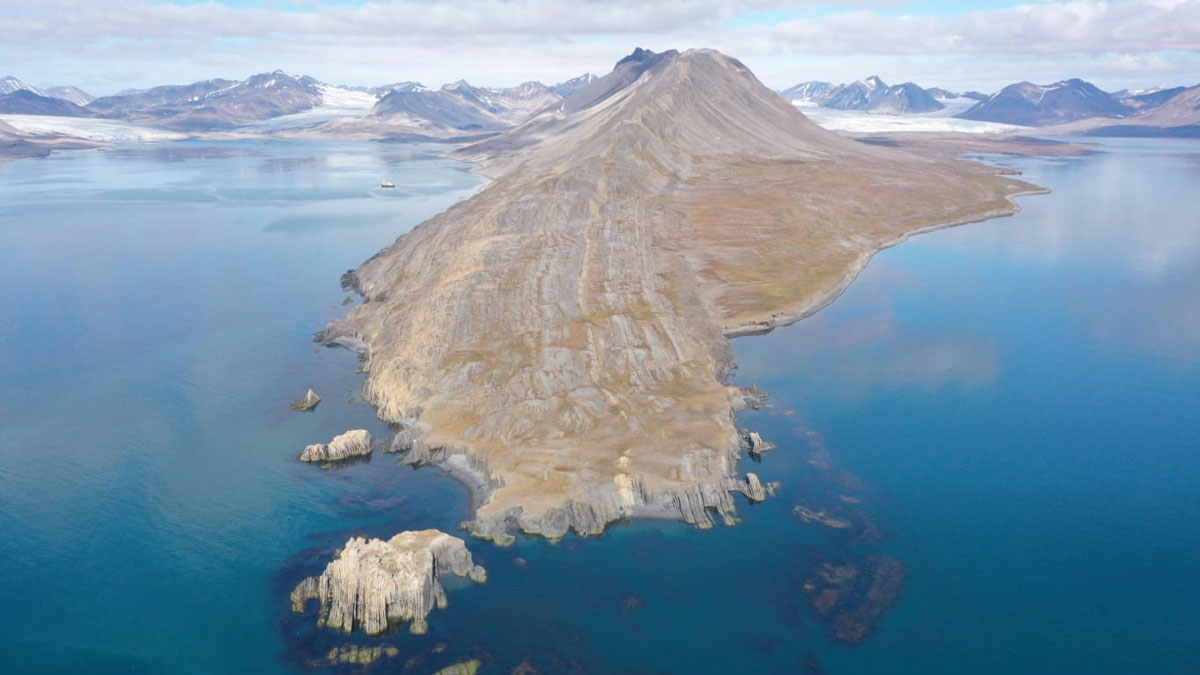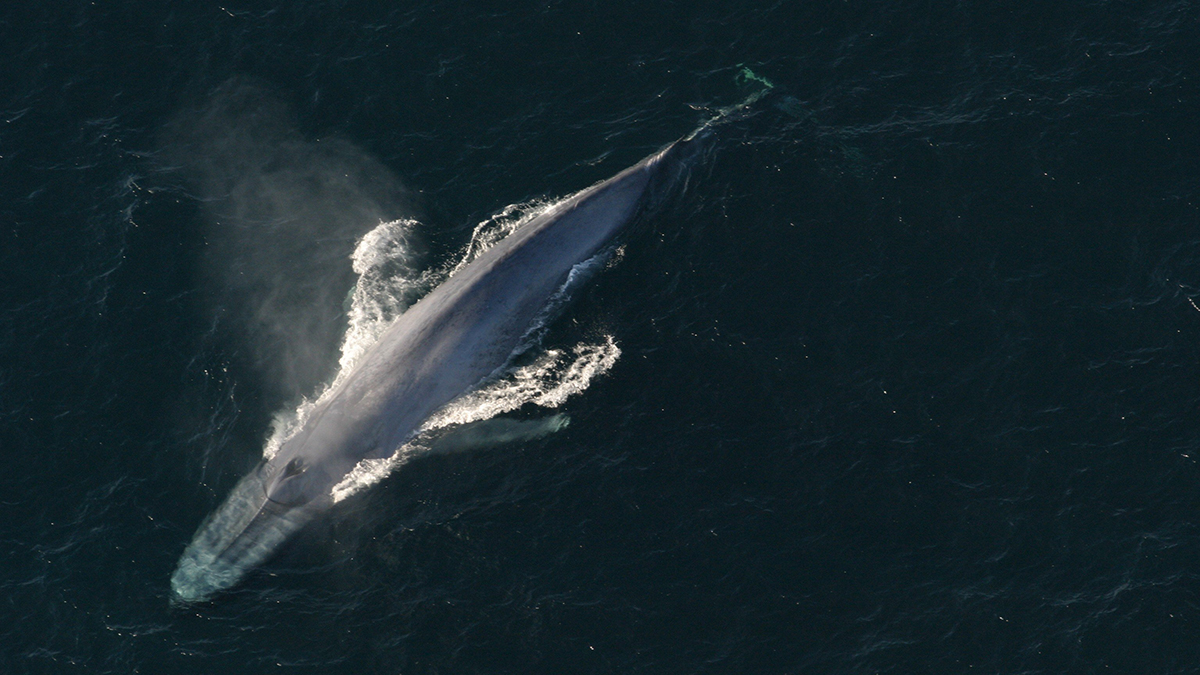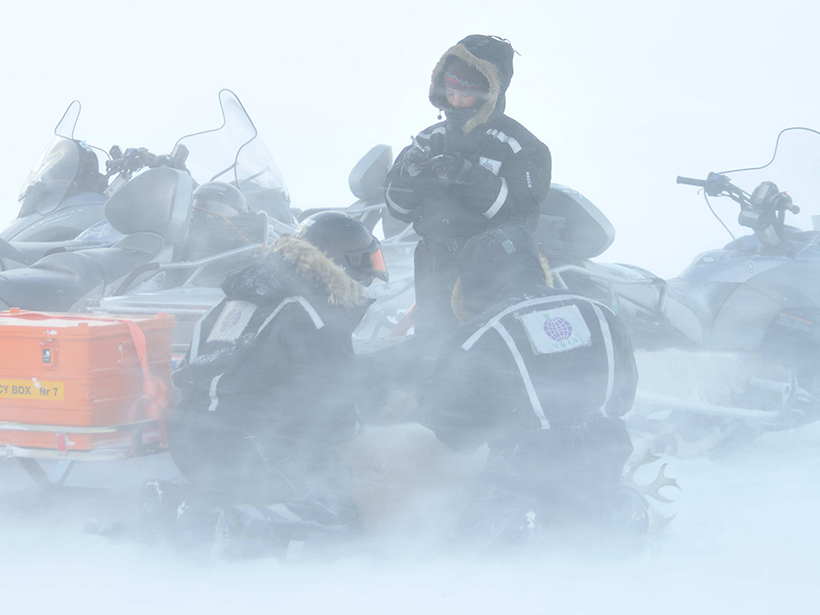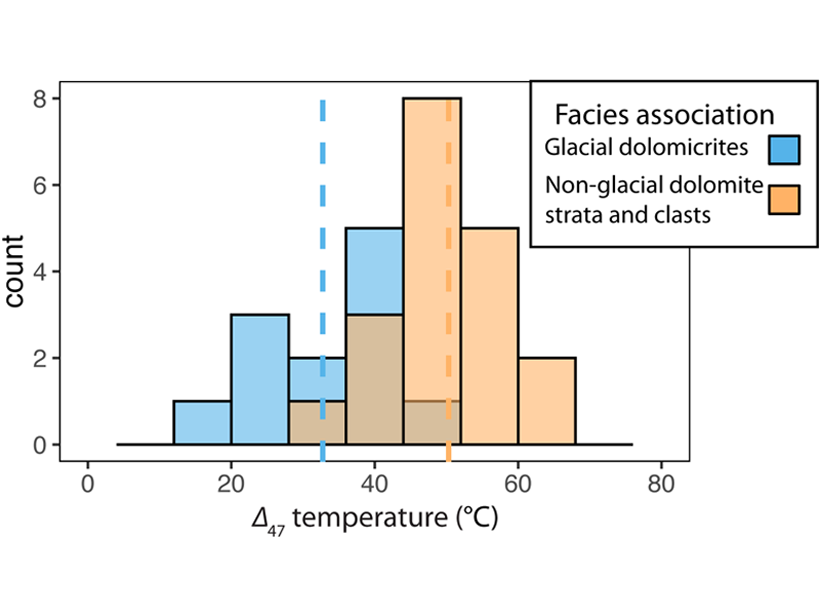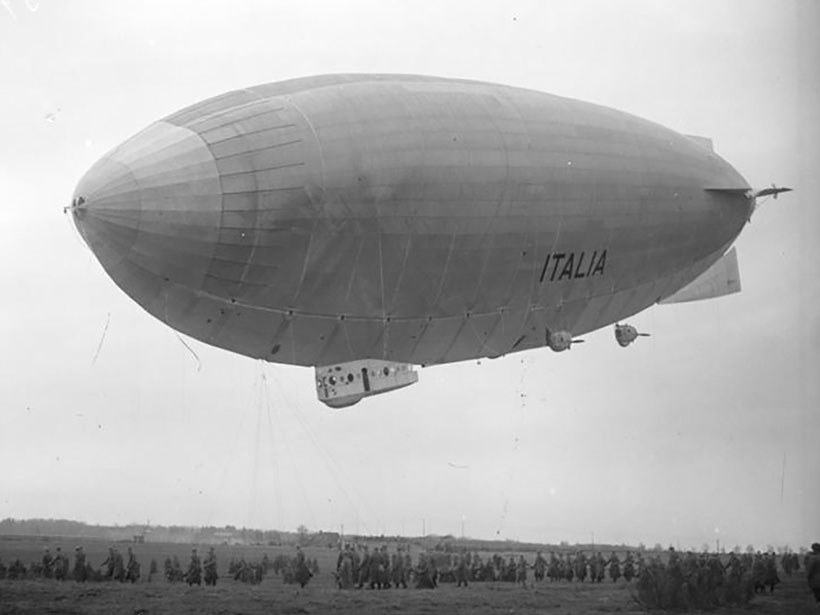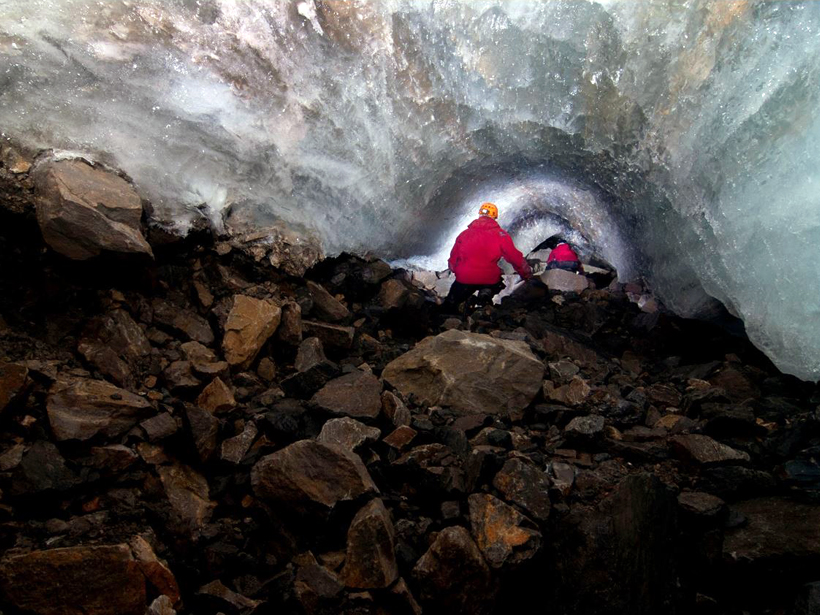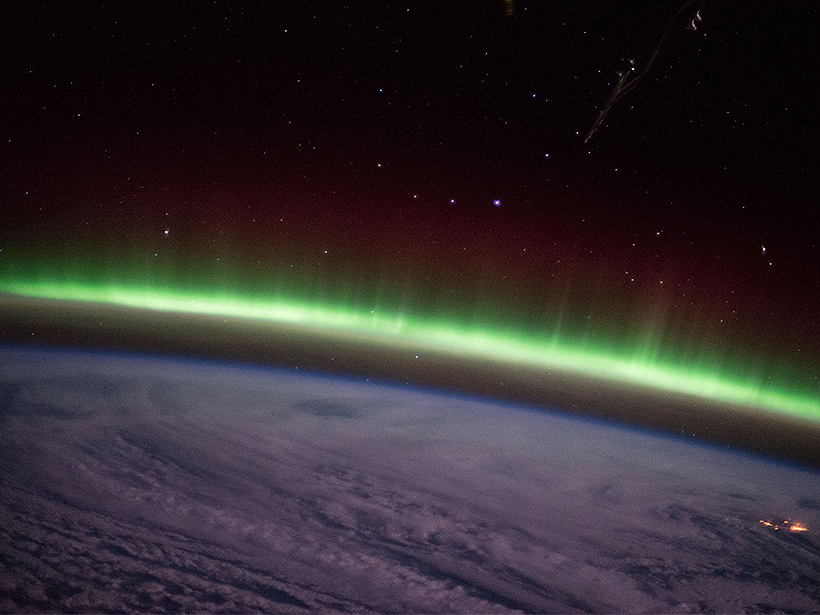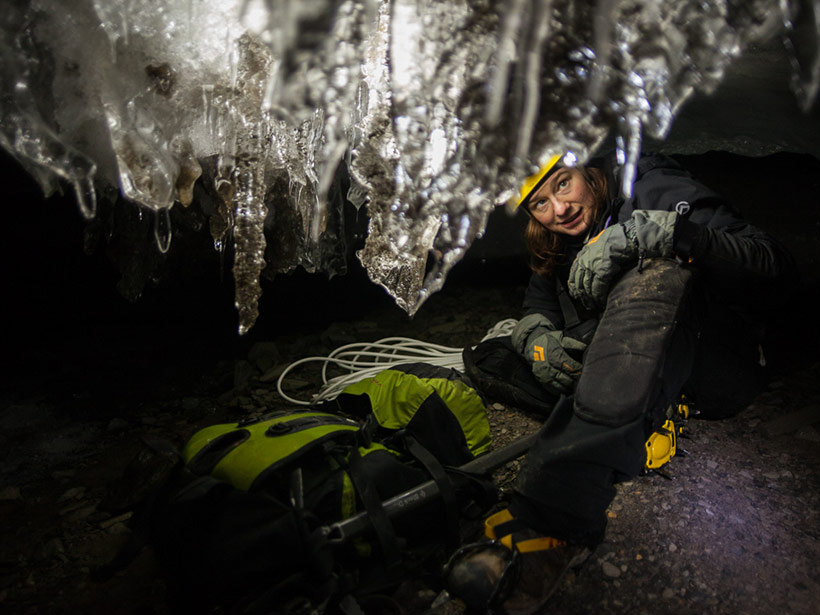Cooler waters near Norway’s north provided a refuge for phytoplankton during the Great Dying, a new study suggests.
Svalbard
Mid-Ocean Ridges Could Be Dispersing Thermophilic Bacteria
Scientists suggest that two strains of endospores located more than 4,000 kilometers away from one another originated in the same place: along the Mid-Atlantic Ridge.
Digitally Preserving Svalbard’s Fragile Geology
A team of researchers is making the iconic rock outcrops of Svalbard available to the world through an open-source database of virtual geological models.
Wiretapped Cables and the Songs of Whales
Researchers jerry-rigged fiber-optic cables in a fjord to eavesdrop on blue whales, with possible applications ranging from seafloor mapping to meteorology.
Reindeer Have to Eat Up to Survive the Winter
Arctic biologists use 25 years of data to find that warmer autumns might be enough to increase the odds of reindeer’s winter survival on Svalbard.
Measuring Paleoclimate During a Deep-Time Deep Freeze
New application of clumped-isotope thermometry to 700-Myr rocks documents large climate swings related to Snowball Earth glaciation and offers better understanding of an earlier Earth system.
Space Weather Lessons from a 1928 Dirigible Debacle
Analysis of a disrupted SOS signal during an early polar expedition showcases the importance of taking space weather into account when exploring new frontiers.
Mapping Subglacial Meltwater Channels
Researchers find that past studies underestimate the friction meltwater channels exert on glaciers by orders of magnitude.
Mysterious Aurora Borealis Feature Explained for the First Time
High-speed particles cause indentations in the magnetopause to form “throat auroras.”
Into the Belly of a Glacier
Ice caving started as a weekend hobby but has now blossomed into a portion of graduate student Kiya Riverman's Ph.D. research.

